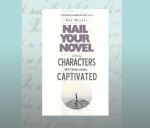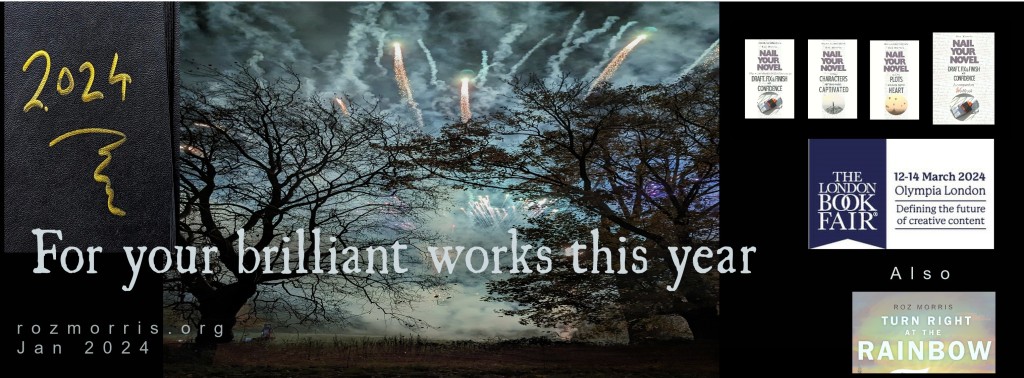On a podcast recently, scriptwriter Moira Buffini was asked this question. What do you do if a character is boring?
‘Cut them out,’ said Moira.
I don’t necessarily agree.
Sometimes cutting a character is the right decision. If the narrative is too crowded. Or your brain is. And all writers need to be bold about killing our darlings, whether they’re characters or plot turns or descriptions or anything else that drags the book down.
But what if a character can’t be axed? They might be vital, especially if your story is based on real life. Still, you find them boring, or beta readers tell you they are. What do you do?
Never ignore the yawn
If anything in the manuscript is boring you, it’ll bore the reader. So your boredom is, actually, a useful writer instinct.
Let’s look at this the other way around. As an editor, I can tell if a writer is interested in a character. Especially if they’re too interested and they give more love than the reader can endure – far too much dialogue, far too many scenes, far too much attention to their wondrous deeds. Although the reader might be rolling their eyes, the writer’s interest is undeniable. It gleams on the page.
In the same way, readers can feel when the author has little interest in a character.
Only connect
What’s missing is a sense of connection. With the writer’s favourite characters, there’s usually too much connection (and not enough critical detachment). With the boring character, there’s hardly any.
This is understandable. Some characters don’t come to us easily. We’re not as curious about them as we are about other characters. But to write them well, we have to be. And we could be.
If you have a character who is boring you, and you need them in the story, have you given them enough of a chance?
A case study
I had this problem in Ever Rest. I had seven point-of-view characters, which is quite a handful, and I enjoyed some more than others. Of course I did. I’m human.
They weren’t boring me as such. The problem was more subtle. I thought I’d been even handed, but as I read their sections I realised something was missing. I wasn’t as engaged with them. They were an emptier experience to write.
What could I do to make them as rich, to me, as the others were?
I realised the problem. I was judging them, because they weren’t like the characters I was in tune with.
This wouldn’t do. After all, everyone is the hero of their own story. Especially in their own point of view.
I decided I’d better get out of their way. Listen without judgement. It seems to have worked, because readers tell me which character they felt most in tune with – and some are the guys I struggled to write with depth at first.
Here’s what I did.
How to listen without judgement – 6 big questions (and a lot of small ones)
1 What does the character do in downtime? I wrote extra scenes around the edges of the story. I wanted to know what it was like to live as them, to have their worries and agendas. If the only scenes you show are dictated by the main plot, you might be missing other snippets of their life where they’re more truly themselves, or where we see an interesting side to them. With one of my characters, I explored her relationship with her sister and uncovered a festering rivalry that cast a new light on her life choices.
You might find, to your surprise, that some of this exploratory work ends up in the book. If it helps you understand them, it might help the reader too.
2 What makes them feel life is good? What makes them feel capable? What restores them? Imagine them playing the drums well, or mending an antique watch or making sourdough bread. Is that their superpower, or something that other people might admire? What are their hopes for the future and why does that fulfil them? What makes them believe in it – or not? Do they think they’ve reached their full potential? Are they waiting for a big break – in love, in work, in their luck?
3 What’s the best thing that could happen to them? And the worst? Would they disagree about this? Do they know what’s good for them?
4 What makes them feel justified? If they’re mean or selfish, where does it come from? Could it come from a feeling of threat?
Threat is a really interesting ingredient. As an extreme example, people who’ve been through wars or lived on the streets might learn the world is not safe, and this can lead to difficult and antisocial behaviour – anything from a hot temper to vindictive acts and physical violence. At a less extreme level, a person might feel the need to protect themselves or another person, or their job, or their rights, or their home life. If the reason isn’t known, this behaviour might be resented or misunderstood by others. Including, sometimes, the author, who thinks they’re an ass.
5 Sure, some people are just mean and irredeemable. But could you explore below the surface? Again, why is it good to be them, even if they’re bad? Perhaps the behaviour has a payoff that puts something else right for them in a muddled human way, which could add richness.
6 Which people do they have around them? Who makes them feel good? Who makes them wary? Who makes them feel life is a battle? If they don’t have these, that’s a useful insight. They have no one who makes them feel good? That’s sad. They have no one who makes them feel threatened? That might be a blue touch paper waiting to be lit. Or a massive ego heading for a fall.
Give them a chance
So if you can’t cull the character, look for connection. And maybe give them a chance anyway. They might surprise you greatly and become your most interesting character of all.
There’s a lot more about writing in my Nail Your Novel books – find them here. If you’re curious about my own work, find novels here and my travel memoir here. And if you’re curious about what’s going on at my own writing desk, here’s my latest newsletter. You can subscribe to future updates here.







 I’ve just finished a developmental edit and, as always, I enjoyed how it refreshed my appreciation of storytelling essentials.
I’ve just finished a developmental edit and, as always, I enjoyed how it refreshed my appreciation of storytelling essentials.










